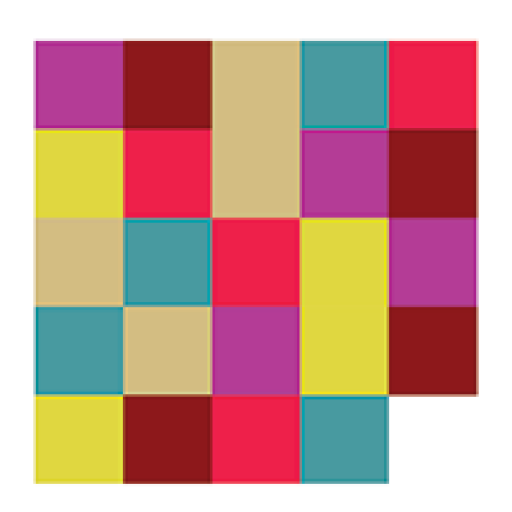WARC, 27 July 2022
With the 2021 Australian Census revealing the significant increase in the immigrant population Down Under, Identity Communications’ Thang Ngo says marketers now need to consider diverse audiences as part of their mainstream campaign.
Young. Diverse. Godless. Behind these headlines from Australia’s 2021 Census are the migrant communities that have driven these Australian trends.
Diversity is now an integral part of Australia’s demography and culture. The latest census tells us that Australia is now a predominantly migrant country. Multicultural audiences are no longer a separate, minor niche. There is no longer multicultural marketing – it’s all marketing. Marketers need to consider diverse audiences as BAU, a part of their “mainstream” campaign.
Migrants make up more than half the population
For the first time, more than half (51.5%) of the 25.5 million population was born overseas or have at least one parent born overseas.
Australia’s population has increased by just over two million in the five years between the 2016 and 2021 censuses. Migration accounted for half of that growth and would have been more if it wasn’t for COVID-19 – 80% of migrants arrived before 2020.
Australia is also more linguistically diverse than ever. More than 5.5 million people now speak a language other than English at home – that’s one in five people – more than at any other time in history and up 800,000 from the previous census.
In Australia’s most populous states, New South Wales and Victoria, that ratio is one in four. In their capital cities, Sydney and Melbourne, the figure rises to one in three.
The top languages spoken in Australia indicate the rise in Asian languages. Around one million people speak a Chinese language and Punjabi has cracked the top six for the first time. Longer-established groups from Europe, such as Greek and Italian, are on the decline, with Italian no longer in the top six.

In terms of arrivals from a non-English-speaking country, India has overtaken China to be the top source country, with migrants born in the Philippines making up the rest of the podium. Migrants from Nepal are the fastest growing, jumping 124% between the last two censuses.
There is good news in relation to Australia’s First Nations population – it has jumped by 25% to more than 812,000 people. First Nations Australians now account for 3.2% of the population, up from 2.8%.

Much work has been done by governments of all levels over time to close the gap in terms of First Nations disadvantage, including increasing the lower life expectancy. The news appears to be good. There’s been a dramatic lift in the number of people aged over 65, which is a continuing upward trend over the past few census periods.
The rise of the millennials
With all their angst, millennials are the group to watch, making up one in five Australians. They are now on par with their parents, the baby boomers. Anxious or not, millennials are having children and Generation Alpha has doubled.

Look behind the headlines and it is migrants who are fuelling the growth of both groups. Take, for example, migrants from Nepal, the fastest-growing migrant group – they are squarely in the age group of millennials and Gen Alpha.

Australia – godly and godless
We are now less religious than ever. For the first time, fewer than half (44%) of Australians identified as Christian and the decline of the past decade has been significant. Within Christianity, Catholicism is the largest Christian religion, making up 20% of the Australian population. Islam, Hinduism and Buddhism are the next largest religions.
Today, almost 40% of the population said they have no religion – 20% higher than the previous decade.

While Australia generally has been drifting from organised religion, this shift has been made more dramatic due to migration. Over 70% of Mandarin speakers, the most spoken language other than English in Australia, claimed no religion.
Migrants from the Philippines make up the third-largest non-English speaking country of birth – over 76% of Filipino speakers in Australia are Catholic.
There is no multicultural marketing, only marketing
Due to the sheer size of the multicultural population in Australia, every statistic we see – millennials, how many cars are purchased, population growth rate, homes purchased, toilet paper bought – all data has been significantly shaped by migrant Australians – over 5.5 million of them.
Multicultural marketing isn’t a different work stream. This audience should be seen as a segment of any mass marketing campaign – a large and highly valuable one. Over one million migrants arrived during the current census period – instant consumers who need to buy clothing, home goods, mobile phones, cars, moisturisers. A migrant typically buys a car within 12 months of arrival, a house within three to four years and an investment property by year five, according to SBS’s Calling Australia Home Research.
Nielsen’s Ethnic-Australian Consumer Report found migrant-Australian FMCG expenditure is growing at a faster rate than Australian-born.
The report predicts migrant-Australians’ spend will grow at a faster rate than their Australian-born counterparts, accounting for over A$4.4 billion in incremental revenue. This will result in the migrant-Australian shopper contributing a total of A$18.7 billion, or 28%, of the total FMCG retail channel.
Brand awareness and loyalty haven’t been built. New migrants don’t yet know the difference between Commbank, ANZ or ING. They haven’t yet developed a preference between Coles, Woolies or Aldi. Category leaders will need to talk to migrants early; if you don’t, you’ll risk a challenger brand getting there first to steal share and loyalty.
Mass marketers are kept awake at night looking for new market segments. The census tells us there are more than 5.5 million reasons to include multicultural Australians into your “mainstream” campaign.
Thang Ngo is a strategist at Identity Communications, Australia’s largest multicultural marketing agency – an IPG Mediabrands company. Twitter @thangngo.

